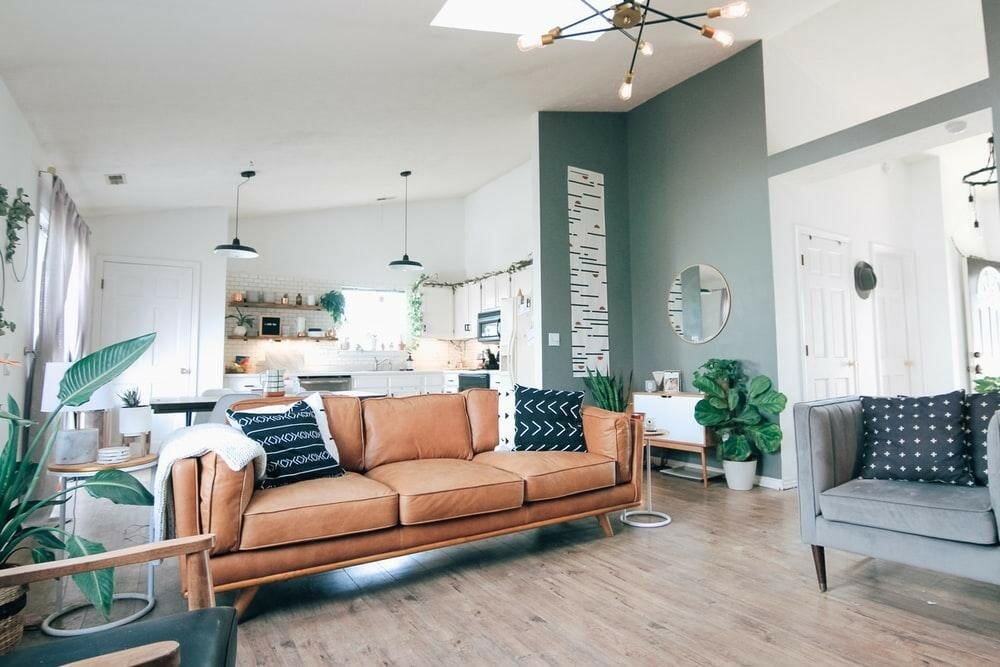Lighting design is an afterthought for many homeowners during home design and renovation. When redesigning an old house, it’s easy to complement the existing lighting system with new pendants and lamps because the hardwired lighting system does the heavy lifting in keeping your home lit up.
Lighting design implies more than selecting fittings and fixtures; it also requires the presence of varied lighting sources, highlighting, and a selection of diverse fittings interacting with the space in a way that builds up the desired atmosphere.
This article uncovers the basics of lighting design and explores how lighting enhances residential wellness and creates a functional lighting scheme.
Types of lighting used in lighting design
Interior designers use three main lighting types in lighting design, and it’s best to familiarise yourself with the terms for them if you plan to redesign your lighting system. Use a combination of all three kinds to obtain a layered effect.
Ambient lighting – often called background or general lighting, provides overall illumination. Ambient sources include pendant light, wall lights, and recessed downlights.
Mood or accent lighting – has the purpose of highlighting architectural elements and objects (sculptures, cabinets, artwork). Accent lighting includes hidden or recessed LED, directional spots, or low-level chandeliers.
Task lighting – provides extra illumination to chosen areas that facilitate activities that require increased attention (working, reading, cooking). Desk, table, and floor lamps are excellent sources of task illumination, together with vanity mirrors and cooker hoods. Some ceiling downlights are also defined as task lighting because they have a rather functional purpose rather than ambient.
How can you create a lighting design plan?
A lighting design plan is something you create after assessing each room’s natural light levels, uses, and size. It’s recommended to consult an electrician, architect, interior designer, or professional lighting company. A complete lighting plan includes lamp and light fixtures and various types of fittings. Ask your electrician where to install each of them and the kind of switches they require.
Begin planning your lighting layout simultaneously as drafting the plumbing system. A successful illumination plan takes into account the possible uses of each room. Walk methodically through your plans (especially if you also renovate your house) and answer the following questions.
• How do I want to use this room?
• Do I want to draw attention to a particular furniture item or decoration?
• Who will be using this room the most?
• At what time of the day do I spend the most time in this room?
• Where are the windows placed, and from what direction does natural light enter the room?
Once you answer these questions, design the plan for every room and identify the best light points. The plan should include markings for permanent fixtures, heat sources, the direction in which you’re more likely to spend most time facing, the positions where light switches should be placed, and spots where you put the main furniture items.
Walk around the rooms before finishing the design plan and picture how the space would look once the illumination sources are in place.
Effects of lighting in interior design
The interior design uses countless tools, one being lighting. You don’t realize the potential of lighting to transform a house until you see the end result. You can use illumination sources to reflect your personality in your home. Lighting is paramount in obtaining the desired atmosphere in your house.
Let’s glimpse at how lighting can transform your house.
Illusion of space
Natural and artificial lighting affect the illusion of space because brightly lit rooms feel bigger. When you enter a house with inadequate lighting, you have the impression of a cramped space, especially when the furniture is crowded in the centre of the room. When you design a lighting plan for a dark room, search for ways to increase the amount of natural light that gets in (switch the heavy curtains with sheer ones, install corner lamps, wall sconces, and hang lights to create the illusion of a spacious room).
Atmosphere and tone
Wisely-picked lighting sets the tone and atmosphere. There is lighting for each space (according to its purpose) to enhance its texture and depth. Correctly identifying the room’s function allows you to choose the proper lighting fixture.
Shadow and reflection
Reflection, light, and shade are aspects crucial for any lighting scheme. The light source’s location impacts where the highlights and shadows fall. Shadow allows you to create atmosphere, variation, and texture. According to the room’s functionality, lighting can enhance particular elements, mask reflections, or enhance areas.
Focal points
As their name suggests, focal points should be the brightest points in a room. A properly recessed spot draws attention to the artwork in the living room or kitchen island. When you cannot create a recessed spot, install two plug-in compact up-lights at the floor level to create a focal point.
Mood and color temperature
Not only the amount of light present in a room impacts your behaviour and mood, but also its colour and tone. We measure colour temperature in degrees Kelvin. At the higher end of the scale, you find white and cool blue light (more stimulating for your brain because it makes you feel more productive) and at the lower end, warmer and yellow light (softer for your brain that makes you feel more relaxed and calmer).
Layering light
Multifunctional rooms like the kitchen and living room require a combination of various kinds of lighting to achieve the right mood for the multiple tasks you complete throughout the day. Experts refer to this method as layering lighting. You can mix the three types of lighting mentioned above to create various moods for different times of the day.
Bottom line
The lighting design in your house is as essential as all the other systems, and without it, the interior design fails to work, no matter how sophisticated it is.




